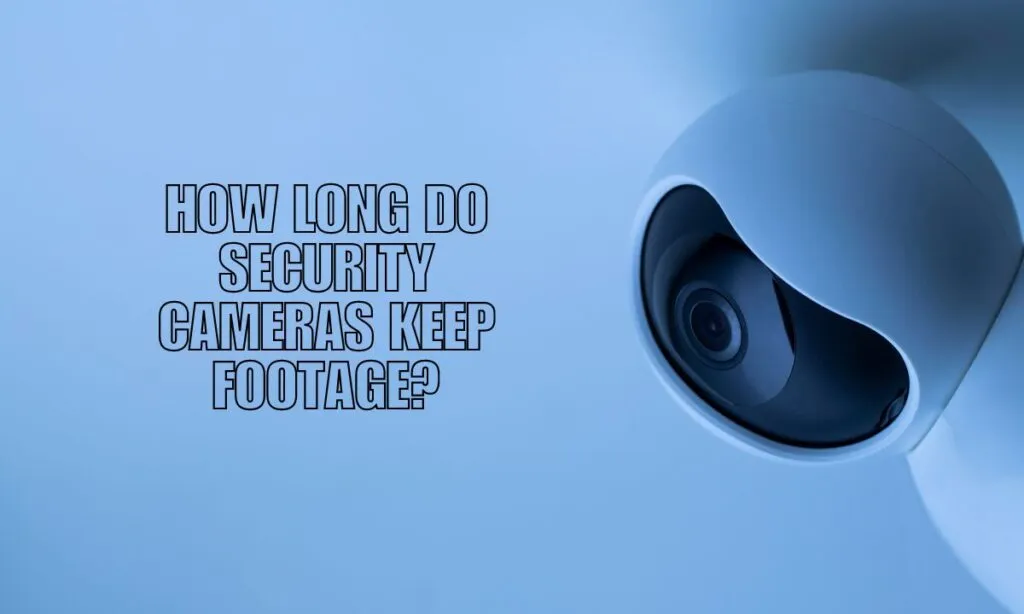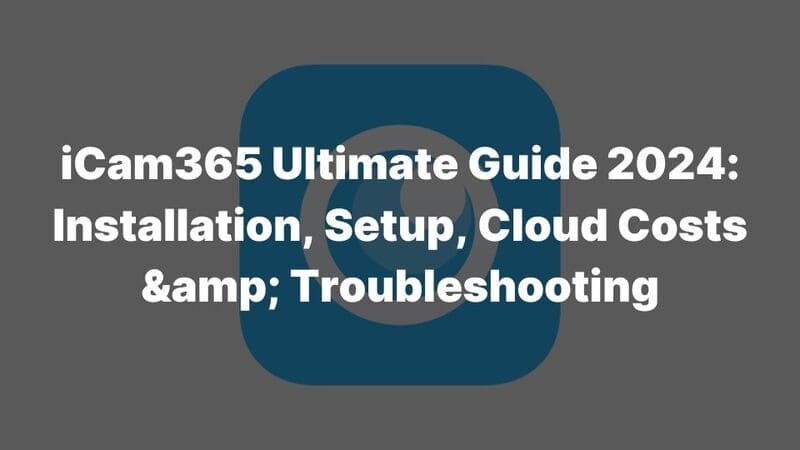Understanding How Long Do Security Cameras Keep Footage is crucial for effective security management, especially in a business environment. The ease of access to recorded footage is crucial for incident handling, trend analysis, and spotting vulnerabilities.
Correct CCTV camera‘s storage duration assists organizations to identify threats and enhance safety measures. Industries’ needs, storage capacity, and legal restrictions dictate the retention time of footage. A proper retention period allows balance between good security and organizational and compliance requirements.
How Long Do Security Cameras Keep Footage?

The amount of time CCTV Security camera footage is kept depends on the industry and the storage method used. Here’s an overview of typical retention times in different sectors:
Common Retention Periods by Industry
- Hotels, Retail Stores, Supermarkets, Construction: Footage is usually stored for 30 to 90 days.
- Banks and Financial Institutions: These establishments often need to keep footage for at least 90 days, with some regulations requiring retention for up to 6 months to 7 years.
- Casinos: The usual period for saving footage is 30 days, though sometimes laws may require retention for as long as 6 months to a year.
- Healthcare Facilities: Depending on patient privacy regulations, security recordings are retained for 30 to 90 days.
- Retail and Hospitality: Like the rest of the commercial business sectors, the retention period would also go up to 30 to 90 days.
- Transportation: The retention period is from 7 days to several months based on the systems.
- Educational Institutions: Usually retain recordings from 30 to 90 days.
- Government & Public Sector: The retention period may greatly vary, from 30 days to upwards of many years, depending on the local laws and nature of footage.
Where Can Security Camera Footage Be Stored?
Security Camera footage storage can be done in several ways, each with different advantages
-
On-site storage: Physically, recorded footage is stored at your business using a DVR or NVR, which allows easy access to recent recordings, or one that’s prone to theft, tampering, or damage in cases of fires and floods.
-
Cloud storage: The footage is stored in remote servers accessible through the Internet by means of a broadband channel. Its form permits for highly safe, expansive storage whereby you can retrieve footage from anywhere in the world linked to the Internet. Cloud storage is best for keeping the data safe from physical damage or theft and usually provides continual backups and higher security.
-
Hybrid storage: Combination of on-site and cloud-based storage. Here, critical footage should be stored on-site for instant access while taking backups in the cloud for their long-term protection. This way, you get the benefits of both systems: the ability to retrieve important footage immediately and maintain backup well off-site.
The best storage system ultimately depends on your unique business needs, budget, and security requirements. Assess your priorities in order to choose the method that provides a readjustable balance between accessibility and safety for your unwatched home security camera records.
Retention Time For Each Individual Security Camera Storage Type
| Storage Type | Retention Period | Features |
| On-Site Storage (DVR/NVR) | 7 days to several months | Depends on the device’s storage capacity and recording settings; data stored on physical devices |
| Cloud Storage | 30 days to several years | Based on subscription plan and storage space; supports long-term storage and remote access |
| Hybrid Storage | Similar to cloud-based retention periods | Combines on-site and cloud storage for greater flexibility; ideal for diverse storage needs |
Security Camera Storage: What Affects Retention Times?
-
Storage Capacity: Larger storage devices, such as high-capacity hard drives or cloud subscriptions, allow for more footage to be stored over extended periods. For example, a 2TB hard drive can hold weeks or even months of footage, depending on the recording settings.
-
Recording Quality: Higher resolution footage, like 4K, requires more storage space compared to 1080p. For instance, a 4K video may take up four times as much space, reducing the amount of time the footage can be stored before overwriting occurs.
-
Motion-Activated Recording: It only records when it senses motion which saves storage space. A Security camera, for instance, won’t record an empty room but will save much space and extend retention time!
-
Compression Technologies: Advanced methods like H.265 can reduce file sizes by 50% compared to older methods like H.264, allowing longer storage durations without compromising video quality. This is particularly useful for large-scale surveillance systems with high recording volumes.
How to Extend the Retention Period of Security Camera Footage?
1. Lower Resolution Settings
Reducing the wireless security camera resolution can help store more footage. For example, switching from 4K to 1080p reduces file sizes significantly, allowing the same storage to hold more video. While higher resolutions capture more details, using lower resolutions is a practical way to extend retention.
2. Adjust Frame Rate
Lowering the frame rate can save a lot of storage space. For instance, reducing from 30 frames per second (fps) to 15 fps cuts storage needs in half. This change keeps essential video quality while allowing longer retention periods.
3. Efficient Compression Algorithms
Modern compression methods like H.265 optimize storage without reducing quality. Compared to H.264, H.265 creates smaller file sizes, enabling longer storage durations within the same capacity.
4. Motion-Activated Recording
Using motion detection minimizes storage usage by recording only when movement occurs. This method ensures only relevant footage is stored, saving space and increasing retention time.
5. Cloud-Based Solutions
Cloud storage offers scalable options for extended retention. Depending on the subscription plan, users can access virtually unlimited off-site storage, eliminating frequent overwrites.
6. Local vs. Cloud Storage
A hybrid approach combines local and cloud storage benefits. Local storage provides real-time monitoring, while cloud storage archives footage for long-term needs, ensuring reliable recording and easy access.
7. NVRs and DVRs
Network Video Recorders (NVRs) and Digital Video Recorders (DVRs) with high-capacity storage are ideal for large systems. They offer features like remote access and efficient management of recordings, improving long-term retention.
8. SD Cards and External Storage
For smaller setups, SD cards or external drives can supplement storage. These options have limited capacity but allow manual transfer and archiving of footage to extend retention as needed.
Summary
In conclusion, understanding how long do security cameras keep footage is essential for effective security management. By choosing the right storage solutions and methods, businesses can enhance their safety while ensuring compliance with regulations. Always remember, that a balanced approach not only helps in monitoring threats but also in safeguarding valuable data for years to come. Consider your unique needs today for a safer tomorrow.






